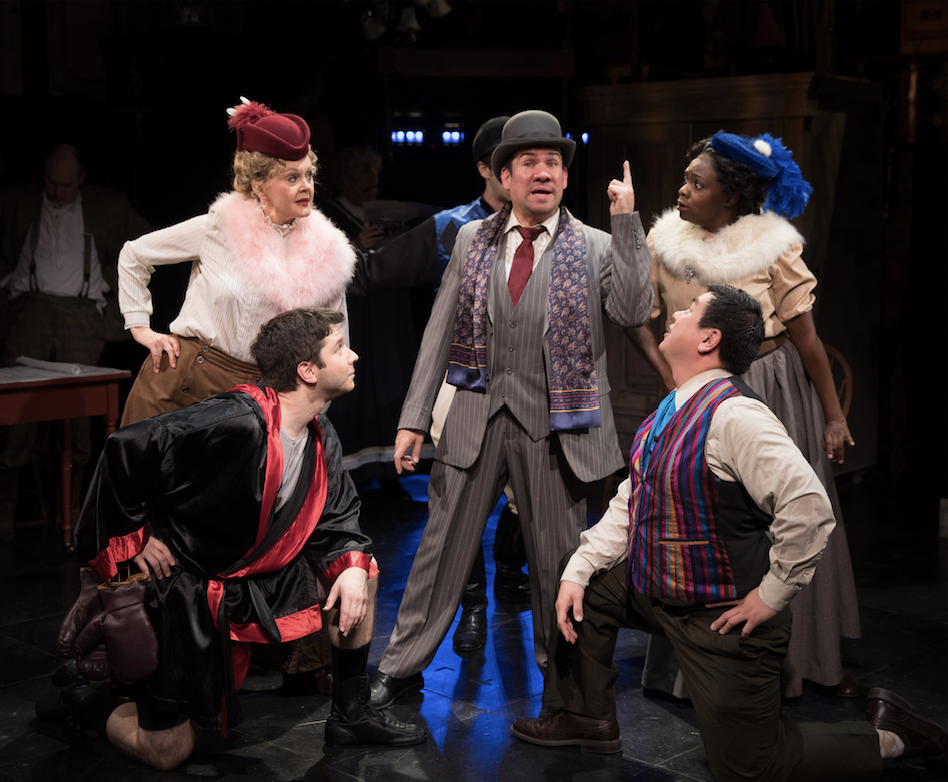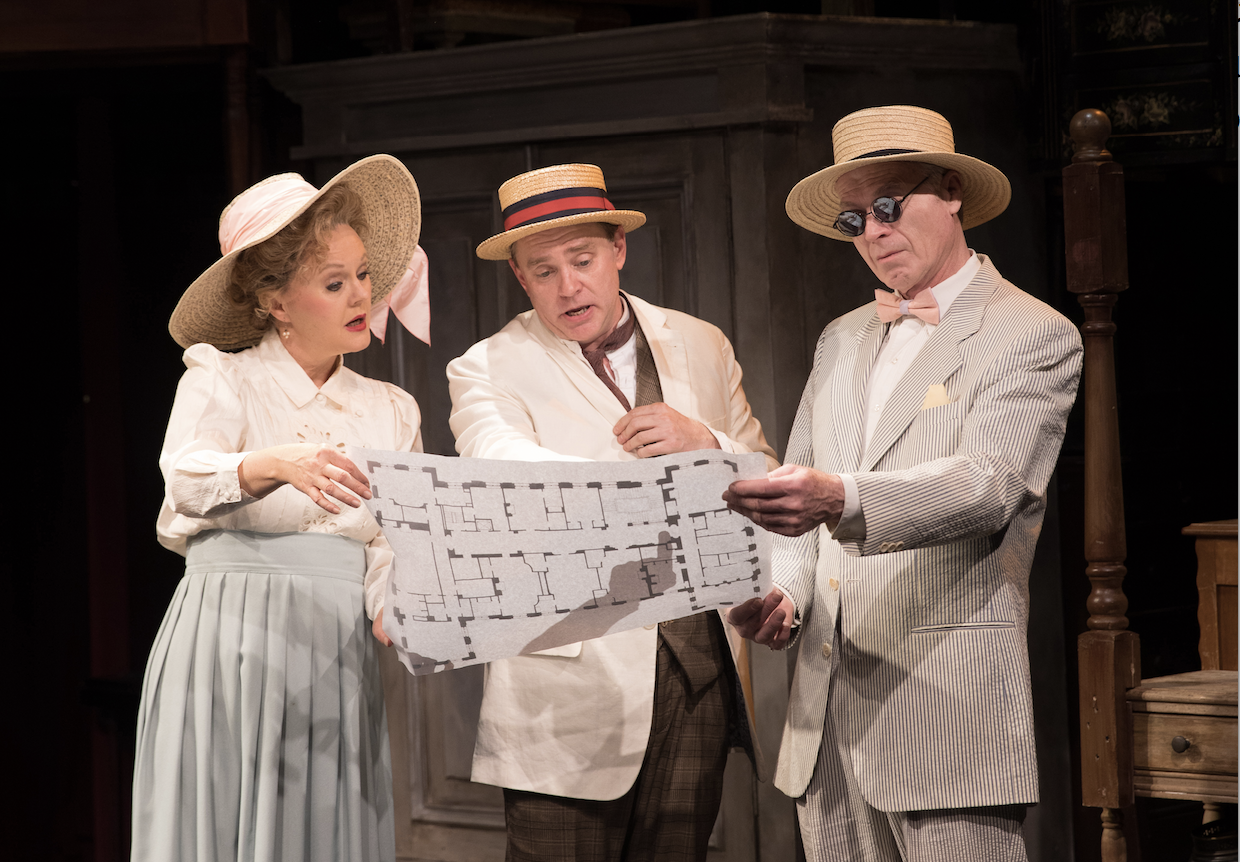By Richard Campbell
You have to hand it to Artistic Director Spiro Veloudos, he’s not afraid of a challenge. The opening night of the musical Road Show, the Stephen Sondheim, John Weidman collaboration with orchestrations by Jonathan Tunick, had some rough spots. Many of these seemed to be because of the inherent complexity of the piece. Directed and choreographed Ilyse Robbins, this is a monster musical to put on such a small stage. Sondheim’s later musicals are also in a special category, bridging modern music and traditional musical theatre into a unique stylistic realm. So for those who are not familiar with his work, the complexity of the lyrics and orchestration may take a little adjustment. Trust me, this is not a show for children.
The premise of two Mizner brothers trying to make good with their father’s dwindling inheritance takes us upon a phantasm of pretty large proportions that moves rather swiftly from scene to scene. Haunted by their father’s death bed admonitions, they travel the world to seek fame and fortune. It must be realized that a great deal of fiction is added here to the story of the Mizner brothers. Addison Mizner was a well-known architect who greatly impacted Florida architecture with his Spanish styles -particularly in Palm Beach and Boca Raton. In Boca Raton he is known for an attempt at a grand community design that originally had Vanderbilt’s and du Pont’s eating out of his hands. Of course, like so many other schemes in Boca, it eventually fell on hard times.
This is musical theatre, so we barely get a glimpse of his accomplishments. Much of the first act is devoted to his ne’er-do-well brother Wilson aka Willie, who was actually a playwright, professional gambler, and boxing promoter-among other things. Though penniless when he married into the millionaire fortunes of the widow Mary Adelaide Yerkes, he soon became a bonafide Manhattan dilettante. To give you an idea of the level of con in this man, when he settled in with Yerkes it gave him access to original Rembrandts, and of course he had copies made of them, to sell them as originals. The two opposing personalities are a great contrast, though at times Weidman’s book runs aground with obvious platitudes.
From the Alaskan Gold Rush to Hawaii, India, South America, Palm Beach, and to Boca Raton, and seemingly every other location in between; there is an element of fun chaos to this show. We are teased with an ever changing cast of stock characters, singing their hearts out. In the lead casting the very skillful actor Neil Casey playing Addison Mizner seems miscast age wise. We can admire his pluck, but he looks a little long in the tooth to be a brother to his much younger sibling Willie, played by Tony Castellanos with considerable exuberance. Cringe-worthy and definitely not believably staged, would be Addison’s later affair with the youthful Hollis Bessemer. What starts out as a kind of vaudeville review is rebranded as a life quest to make money and achieve fame, (one of my least favorite plot devices), narrated with comical asides, dark humor, and soulful songs. This musical relentlessly pushes the envelope.
Stand out character work by Patrick Varner as Hollis Bessemer, and his resilient ensemble skills powered the second half of the show. The same can be said for the ever reliable Will McGarrahan, who kept the journey moving fast. The Boca Girls number by Jordon Clark, and Robin Long with ensemble, was a snappy radio scene. Anyone with knowledge of vocal work will immediately hear this show is a pig. Thank God for Jonathan Tunick, whose orchestrations glue it all together. I think sometimes Stephen Sondheim is secretly punishing vocalists- not ever wanting to sound simple, always reaching for the complex. The script, having been through at least two major revisions over the years, in its final version won an Obie and Drama Desk award for lyrics in 2009. Lucky for the mostly great voices and the tight orchestra, as the book still has clichés that only true lovers of musical theatre could excuse.
To compensate for the tight space, set designer Christina Todesco stacked travel trunks and furniture high into the sky that actors could ascend and descend- allowing interesting stage pictures and the clever positioning of the orchestra. I am sort of amazed that in the 90-minute stretch, with dozens of costume changes, and climbing up and down the suitcase set, that someone didn’t collapse from sheer exhaustion. In general, the staging and choreography was imaginative, but I think- much like the over packed musical score- some of those suitcase set pieces needed to reveal a little more. This is the kind of musical to take college theatre students to see, as it shows fairly admirably how good ensemble work and complex choreography work. The show runs at the Lyric Stage until February 17th.







